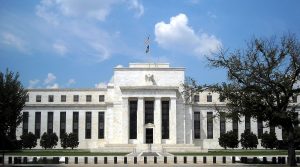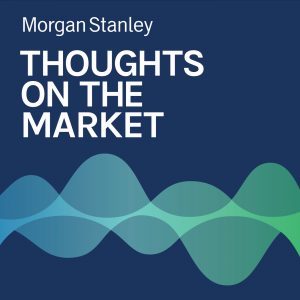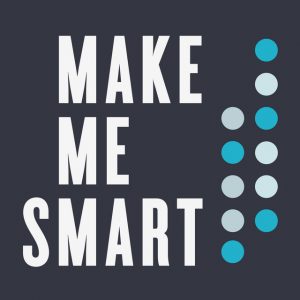
From the nation’s founding, political thinkers have debated what the proper role of government should be in regulating the U.S. economy (and banks in particular). Article I, Section 8 of the Constitution makes no mention of a federal banking system in its enumeration of Congressional powers. While disagreements persist about the proper extent of the Federal Reserve’s authority (as well as its need for greater transparency), a general consensus has developed in recent decades in favor of some degree of governmental intervention in regulating economic growth.
The current framework of Federal oversight of the economy has its origins in the Federal Reserve Act of 1913. After nearly a century of periodic, unpredictable economic crisis, Congress formed the Federal Reserve, a unique structure designed to support both the public good (represented by the government) and private interests (represented by banks). The goal (then and now) was to stabilize the economy and ensure steady growth. At the national level, the Federal Reserve (a governmental institution) acts as the central bank of the United States, and is responsible for supporting maximum employment, moderating inflation, and keeping long-term interest rates low. Twelve regional banks operate as private entities (but in cooperation with each other and the Federal Reserve) and regulate local banking policy. In times of financial distress, such as the Great Depression, or the 2008 economic downturn, the Fed is often entrusted with expanded responsibilities to help return the economy to a steadier state of affairs.
Monetary policy (and specifically the decision to raise or lower short-term interest rates) has a major influence on the economy and Americans’ daily lives. A core foundation of economics holds that with the proper degree of government intervention, it is possible to mitigate short-term economic crises and ensure long-term stability. Increases in interest rates, for example, lead to limits in the overall supply of money, making it less likely for people to take out loans or buy expensive goods; which helps “cool” the economy when demand is high and prices are rising. But if the economy slows too quickly, unemployment is likely to increase. The primary purpose of the Federal Reserve, therefore, is to ensure the economy grows at a steady pace (defined as 2% annually)- not too hot, not too cold, but “just right.”
Since the onset of the Covid-19 pandemic in early 2020, the Fed has taken an active role in addressing economic disruptions brought on by mass layoffs, persistent supply-chain issues, ever-worsening reports about climate change, worker demand for better pay, and inflation. Economic stimulus packages in 2020 and 2021 put money in people’s hands and created jobs-focused infrastructure programs, so the Fed lowered interest rates in order to stimulate borrowing. But as short-term concerns about inflation failed to subside in early 2022—and as the Russian invasion of Ukraine triggered fears about energy and grain prices worldwide—the Fed announced on March 16 that it would raise short-term interest rates by 0.25%. Most economic experts project similar increases at each of the next six Fed meetings this year to further respond to economic uncertainty. By raising interest rates gradually, the Fed hopes to slow inflation without triggering a new wave of job cuts. Most experts agree that stagflation (characterized by high unemployment, inflation, and sluggish demand) is not currently a concern, but volatile oil prices and uncertainties about the future of Covid have heightened financial analysts’ awareness of potential future threats to the U.S. economy.
This week’s Current Events resources examine the Federal Reserve and interest rate hikes. The resources provide historical content and modern day context around important elements of macroeconomics, allow students to develop their own opinions about Fed policy, and examine monetary policy in a broader social context, particularly in relation to economic justice, climate change, and the global economy.
Looking for more current events resources? Sign up at our We the Teachers Educator Resource Community page, where you can find all of our Current Events, and learn about our other programs!
Essential Questions, Vocabulary, & Extend the Resources:
- Why was the Federal Reserve created?
- In the present day, how does the Federal Reserve fulfill its responsibility to ensure stability in the U.S. economy?
- How do the actions of the Federal Reserve affect the lives of everyday Americans, and the U.S. and global economies?
- How does the Federal Reserve balance public and private interests?
- Why are short-term interest rates expected to rise multiple times in 2022?
- If you were a member of the Federal Open Market Committee, would you vote to raise interest rates this year? Why or why not? (And if so, by how much?)
- In your opinion, what responsibility does the Fed have to consider the effects of its decision to raise or lower interest rates on forces such as wealth inequality, climate change, or disproportionate negative economic impacts on different racial groups?
Click here for a hardcopy of the Essential Questions & Fed Rate Hikes Vocabulary.
Click here for a hardcopy of the Extend the Resources handout with suggested lesson activities and extensions.
Background Articles:
Federal Reserve issues FOMC statement, Federal Reserve, March 16, 2022
History of the Federal Reserve (Timeline), FederalReserveEducation.org, 2022
What is the purpose of the Federal Reserve System?, Board of Governors of the Federal Reserve System
Who Owns the Federal Reserve Banks?, St. Louis Federal Reserve
Background Videos:
https://www.pbs.org/wgbh/frontline/film/the-power-of-the-fed/
Recent Articles:
Americans will feel the impact as Fed raises rates. Here’s what you should know, NPR, March 18, 2022
US inflation soared 7.9% in past year, a fresh 40-year high, ABC News, March 10, 2022
Explainer: Past Fed hiking cycles, from sanguine to severe, may say little about this one, Reuters, March 17, 2022
What Happens When The Fed Raises Interest Rates? Forbes, March 16, 2022
Credit card debt will cost you more with the Fed’s interest rate hikes (video), Syracuse.com, March 23, 2022
What the Fed rate increase means for savings accounts, OregonLive, March 20, 2022
Average 30-year mortgage rate tops 4% for the first time since 2019, OregonLive, March 17, 2022
Powell’s message: Inflation is coming down one way or another, Axios, March 22, 2022
Is America’s Economy Entering a New Normal?, The New York Times, March 24, 2022
Recent Videos:
Recent Podcasts:
Andrew Sheets: The Fed Has More Work To Do, Morgan Stanley Thoughts on the Market, March 18, 2022
The Fed, explained, Make Me Smart, November 23, 2021
Recent Editorials:
The Fed is charting a course to stagflation and recession, Washington Post, March 16, 2022
America’s Economy in the European Mirror, New York Times, March 21, 2022
Ukraine War Fallout: It’s Not the Fed’s Job to Stop Supply-Side Inflation, Bloomberg, March 18, 2022
The Fed wants to slow down the economy. It risks leaving Black workers behind, Fortune, March 17, 2022
Articles for Elementary Students:
The Federal Reserve and the Elementary Classroom, NCSS, 2010
Federal Reserve Facts for Kids, Kiddle, 2022
Lesson Plans (Grades K–5):
Federal Reserve Education, K-4, Federal Reserve Education.Org
Lesson Plans (Grades 6–12):
The Federal Reserve System: An Overview Lesson, EconEdLink
Monetary Policy, Part Art, Part Science, Federal Reserve Bank of Atlanta
Goals and Tools of the Federal Reserve, C-Span Classroom
The Story of the Federal Reserve System, New York Federal Reserve
Media & News Literacy Lesson Plans:
Media Literacy Resources – Newseum
Resource Library – News Literacy Project
News & Media Literacy Lessons – Common Sense
Media Misinformation, Viral Deception, and “Fake News” – University of Wyoming
Evaluating Sources in a ‘Post-Truth’ World: Ideas for Teaching and Learning About Fake News – New York Times Lessons


